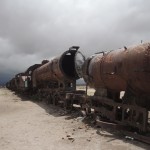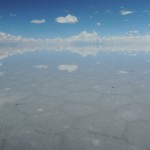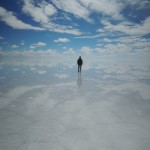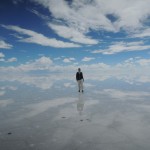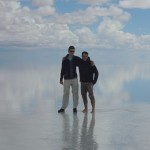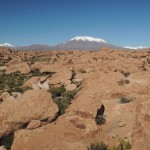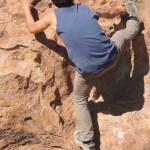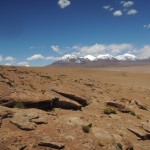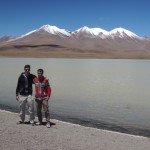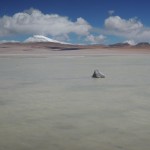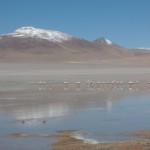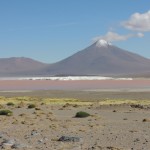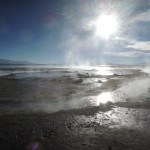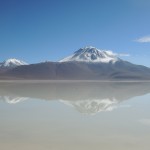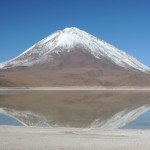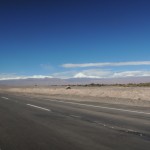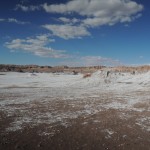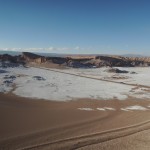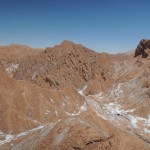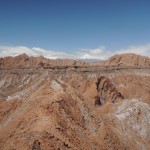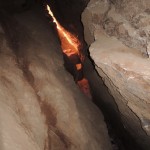After we crossed the border in a small, lonely border station and went from Bolivia to San Pedro de Atacama in Chile, we left already the second country on our journey, so again it is time for a country review. In Peru we were really surprised how well everything worked. Not always as planned, but after all, travelling is predictable and comfortable.
Nothing is like that in Bolivia. Here nearly nothing goes the way it was planned, most things do not work at all and people have learnt to accept that: Roads and city centers are blocked, people are later than expected, when You would like to buy what is advertised outside it won’t be available, if You want to open a box of biscuits You need a PhD in engineering …. Most often a strike causes problems, but there are also technical problems (which of course never have occurred before …. ) or carnival. And in the end Bolivians are more concerned about the fact that they do not have an open access to the sea, after having lost yet another war against Chile in 1904. This unbearable situation, comparable to the well-known third-world country of Switzerland, is still seen as the one and only reason for all problems and plays an important role in everyday life: we had the dubious pleasure to see a ceremony of the Bolivian Navy (no joke!), where Marines showed an uttermost pathetic movie named “El Mar de Bolivia” ….
However, there are two things that enable You to forgive all this hassle to the country. The first is that Bolivia is extremely cheap. You can easily travel with 10 Euro per day and if You only pay prices on that level, You do not expect perfect service. Moreover, You do not need everything to work at once, if You have time.
The second thing which makes it easy to endure all problems are the people. In fact, they are not friendly in that sense. Bolivia is very poor, in La Paz there are no westernized, comfortable neighbourhoods like in Lima (but on the other hand there are no really poor areas like in the Peruvian capital). In the country, especially on the Altiplano, people live in very simple mud houses without any heating systems in very harsh climatic conditions. This hard life creates hard people: In the country, the Bolivians were rather introverted, smiling not too often, especially the woman look old even when young, but most people are ready to help. So although people are not too enthusiastic, You feel welcome. And again, what is really amazing is a certain kind of naivety, which is widespread, very appealing and it explains why things seldom work. It is hard to describe this naivety in detail, but we will demonstrate it with an example:
When we were at the bus terminal searching for tickets to Potosí, which is one of the most important cities of the country, we heard some answers uniquely found in Bolivia. First of all, not even one half of the companies who put “Potosí” with huge letters on their counter actually offered passages. From the rest we heard responses like:
“Is there a bus from Your company to Potosí tomorrow night?” – “I do not know, but I do not think so”.
“What would be the price?” – “70 or 80 Bolivianos” – “Ok, but which of the prices do we have to pay?” – “I don’t know, I have to ask my boss”
“How much is it?¨ – “110 Bolivianos” – “Ok, accepted, we buy two tickets” – And to further promote his company he gives it to us for 100 without saying anything ….
And our personal favourite:
“Is the bus comfortable and can one sleep? What is the angle You can put the seats back? How many degrees?” In probably every other country You would get an answer like “150 degrees, but that is very comfortable”. Not so in Bolivia. On the question how many degrees are possible” they answer very sincere with “Oh, not very much”. And if You hesitate to book then they are very helpful: “But just look at the company over there. They have similar prices but much more comfort.”
You see, with that attitude a country cannot work – but what a lovely way not to work!
